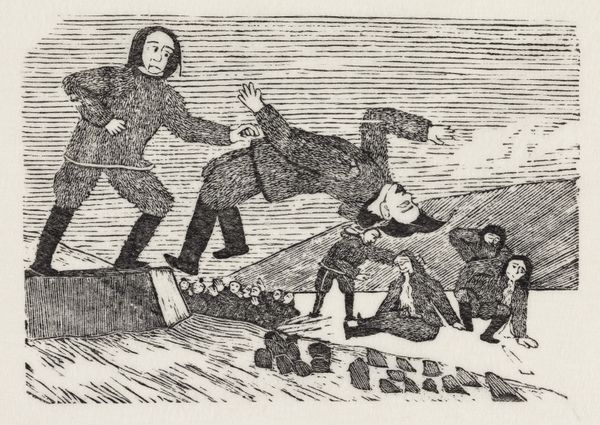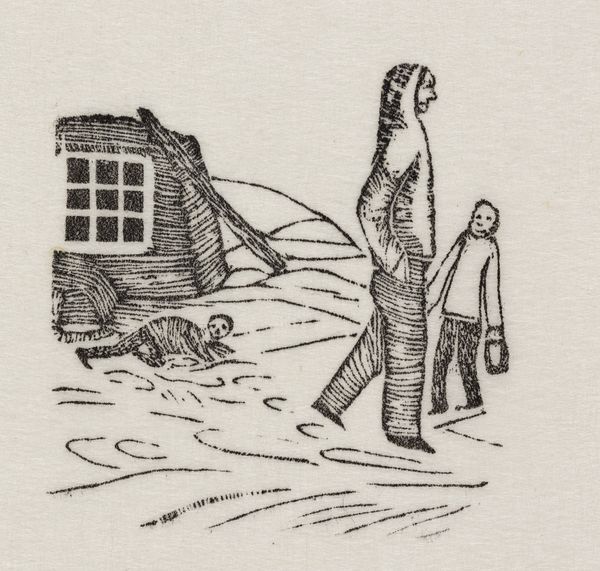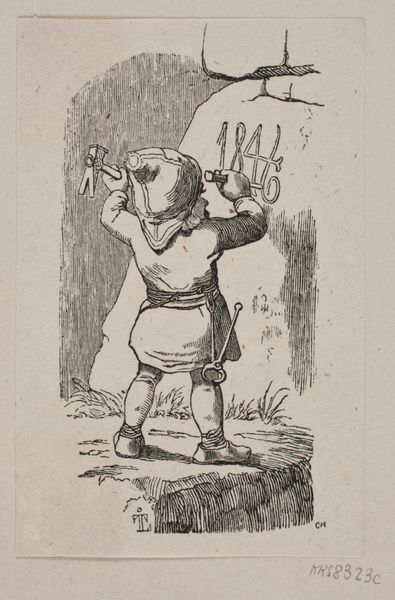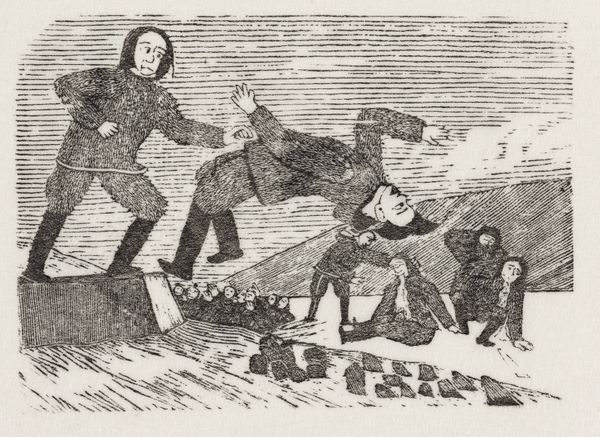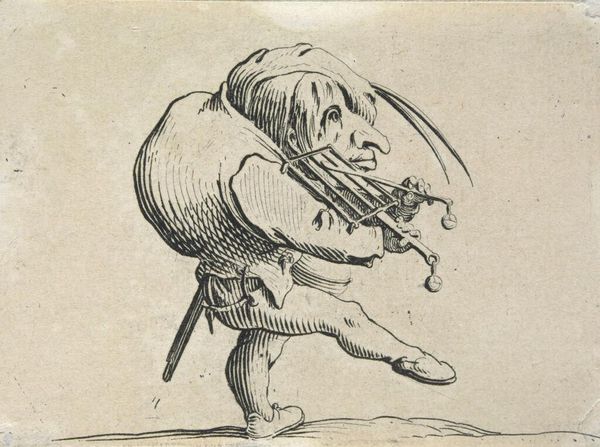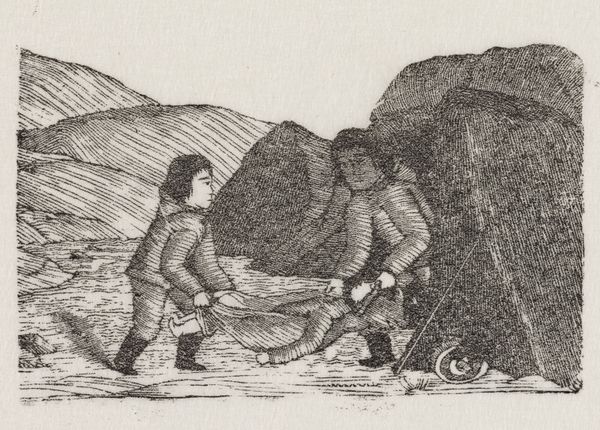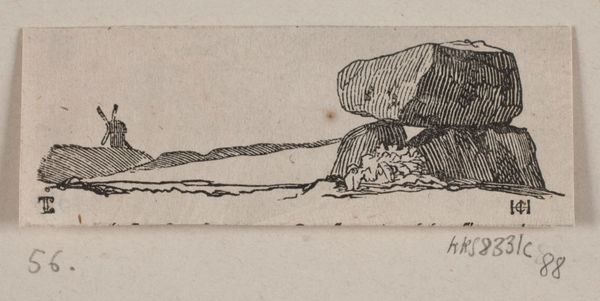
Fortællingen om Akigssiak: Akigssiak kaster indlandsboen ned fra et fjeld 1859 - 1860
0:00
0:00
print, woodcut
#
narrative-art
# print
#
figuration
#
woodcut
#
northern-renaissance
Dimensions: 88 mm (height) x 93 mm (width) (billedmaal)
Curator: Welcome. Let's look at Markus Lynge's striking woodcut, "The Story of Akigssiak: Akigssiak throws the inlander down from a mountain," created between 1859 and 1860. It's currently held at the SMK, the National Gallery of Denmark. Editor: It's stark, isn't it? The limited color palette and simple lines create an immediate sense of violence, amplified by the figure tumbling downwards. Curator: Indeed. This piece offers us a window into the power dynamics within Greenlandic society at the time. Lynge, as a Greenlander, would have been acutely aware of the interactions—and often, the clashes—between different groups. Editor: The figure standing above, on solid ground, seems almost devoid of emotion. The vertical lines that comprise his body speak to control and power over the other figure cast in free fall who has swirly almost chaotic lines depicting movement. Do these lines imply a relationship with the indigenous populations? Curator: Precisely. Inlander here most likely represents an Inuk from the interior, the act embodies a disruption, an othering that’s being visualized, literally and figuratively pushing him from their place, that's being expressed visually in his clothing depicted by the strong vertical lines on the body. Editor: So the woodcut acts as both a visual narrative and a commentary on social hierarchies? Curator: Yes. Look closely at the rocky landscape, the jagged edges. These elements might symbolize the harsh realities of survival, but also a very uneven, cruel ground. This isn't just about an individual act; it reflects systemic injustices. Editor: I'm also struck by how the image relies on established archetypes and visual codes. There's a primitive feeling, a focus on storytelling through stark contrasts. We can read how that is connected to historical memory here. Curator: Right, that choice can also signal a reclaiming of cultural memory and storytelling traditions against colonial narratives. It brings forward questions about cultural authority. It asks who has the power to narrate and shape our understandings of Greenlandic history. Editor: Ultimately, this image evokes profound questions about violence, agency, and cultural preservation. The visual language reflects lasting psychological wounds. Curator: Exactly. Lynge encourages viewers to think about the enduring legacies of colonial trauma within a local framework of inter-cultural strife. The print serves not only as documentation, but as testimony to the fight for social justice and identity.
Comments
No comments
Be the first to comment and join the conversation on the ultimate creative platform.
